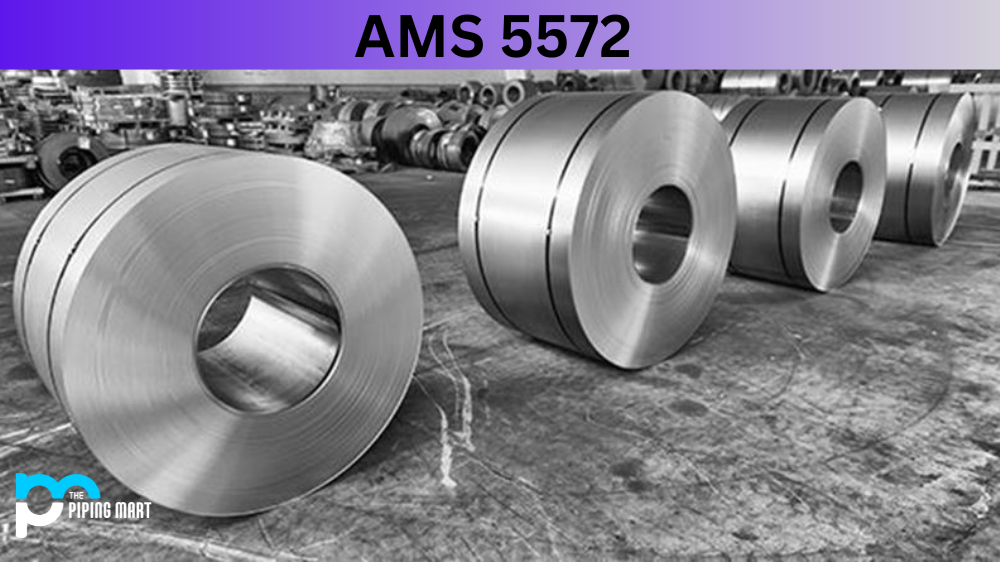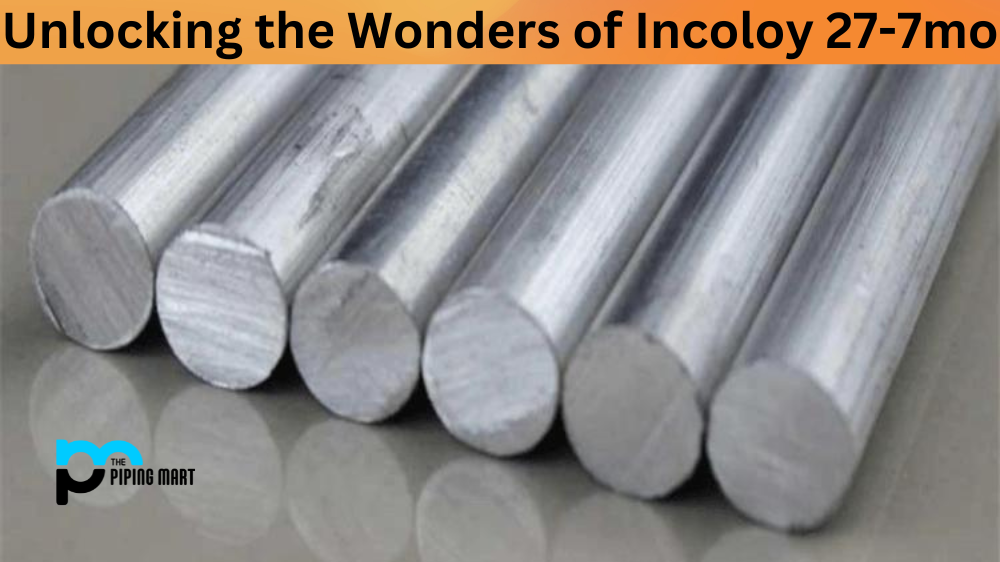204 Stainless steel is a popular material used in many applications and industries due to its strength, durability, and corrosion resistance. One of the most common stainless steel is Type 204, also known as AISI 204. This type of stainless steel is especially useful due to its properties and uses. Let’s take a look at what this type of stainless steel offers.
What Forms is 204 Stainless Steel Available at Piping Mart?
- 204 Stainless Steel Pipes
- 204 Stainless Steel Tubes
- 204 Stainless Steel Round Pipes
- 204 Stainless Steel Custom Pipes
- 204 Stainless Steel welded Pipes
204 Stainless Steel Composition
SS 204 is an amazing material with an incredible composition. Made up primarily of iron, as well as chromium, nickel, and traces of other elements, it can be used to make Inconel sheets that are extremely durable and corrosion-resistant due to their high chromium rate. Among refractory metals like 204 stainless steel is one of the best options for those looking for something that has the possibility to resist high temperatures and last over the course of a long time. Its relatively low cost makes this type of steel especially attractive for businesspeople looking for a good deal without sacrificing quality.
| Titanium (Ti) | 0.10% max |
| Molybdenum (Mo) | 2.00-3.00% |
| Nitrogen (N) | 0.10% max |
| Chromium (Cr) | 17.00-19.00% |
| Nickel (Ni) | 8.00-10.50% |
| Sulfur (S) | 0.030% max |
| Phosphorus (P) | 0.045% max |
| Silicon (Si) | 0.75% max |
| Manganese (Mn) | 1.00% max |
| Carbon (C) | 0.15% max |
| Iron (Fe) | Balance |
204 Stainless Steel Physical Properties
AISI 204 is a widely-used type of stainless steel with impressive physical properties found in many industries. This corrosion-resistant and strong material have a low carbon content, giving it excellent weldability and forming characteristics. It also has outstanding mechanical strength and can withstand high temperatures. Moreover, its low magnetic permeability and good electrical resistance make the 204 stainless steel an advantageous option, especially in certain sectors like oil refineries or power plants where aggressive conditions exist. Its amazing variety of physical characteristics makes it a popular choice for applications ranging from medical instruments to kitchen appliances.
| Density | 7.93 g/cm3 (grams per cubic centimeter) |
| Melting Point | 1454–1538 °C (2650–2800 °F) |
| Tensile Strength | 620–830 MPa (megapascals) |
| Yield Strength | 310–760 MPa (megapascals) |
| Elongation | 40–50% |
| Hardness | Brinell Hardness 180–220 HB (hardness in Brinell scale) |
| Modulus of Elasticity | 193–200 GPa (gigapascals) |
| Thermal Expansion | 15.9 µm/m°C (micro-meters per meter-degree Celsius) |
204 Stainless Steel Mechanical Properties
One of the most renowned materials for its unbeatable mechanical properties is 204 stainless steel. Used heavily in the aerospace industry, 204 stainless steel is composed of nickel-chromium alloy and iron, making it extremely resistant to a wide range of temperatures, moisture, and corrosion. The high melting point of 204 stainless steel also makes it highly desirable for applications like industrial furnaces and petrochemical engineering. Furthermore, 204 stainless steel has incredible tensile strength and fatigue resistance that gives it an added advantage over other materials used in similar applications. This incredibly durable material also allows increased product longevity as compared to many other metals used in engineering evolutions. To summarize, 204 stainless steel is unrivaled when it comes to mechanical properties and should be your metal of choice if you are looking for a hardy material with unmatched reliability.
| Yield Strength (0.2% Offset) | 205 MPa (30 KSI) |
| Tensile Strength | 515 MPa (75 KSI) |
| Elongation | 40% |
| Hardness | Rb 95 max |
| Ductility | 55% |
| Modulus of Elasticity (Young’s Modulus) | 193 GPa (28×10^6 psi) |
| Poisson’s Ratio | 0.29-0.33 |
| Thermal Conductivity | 16.3 W/m-K (11.4 BTU/hr/ft2/ft/°F) |
| Specific Heat | 0.12 J/g-K (0.02 BTU/lb/°F) |
| Thermal Expansion | 9.4 µm/m-K (5.2 x 10^-6 in/in-°F) |
204 Stainless Steel Specifications
UNS20400
EN1.4597
204 Stainless Steel Properties
204 steel is an austenitic-ferrite alloy with a low-carbon content. It has high levels of chromium, nickel, molybdenum, and nitrogen, making it suitable for use in harsh environments such as those exposed to salt water or chemical agents like bleach or acids. The alloy has a higher yield strength than regular 304 stainless steel and is more resistant to corrosion than other types, such as 201 or 301 stainless steel. It also has good weldability, formability, ductility, and machinability.
- 204 stainless steel is chromium-nickel-manganese stainless steel that contains between 16 and 18 percent chromium, 3 and 4 percent nickel, and 5 and 7 percent manganese.
- 204 stainless steel is also known as “austenitic” stainless steel, as it is non-magnetic and cannot be hardened by heat treatment.
- 204 stainless steel is corrosion-resistant and easy to weld, making it ideal for various applications.
- 204 stainless steel has a lower carbon content than other austenitic stainless steels, making it less likely to cause intergranular corrosion.
- 204 stainless steel is available in many products, including sheets, plates, coils, bars, pipes, and tubing.
204 Stainless Steel Uses
Type 204 stainless steel can be used in many applications, including medical tools and equipment, kitchen appliances, automotive parts and components, plumbing fixtures, hardware items like screws and bolts, industrial machinery parts such as gears and levers, hand tools such as wrenches and pliers, food service equipment like grills and fryers, outdoor furniture pieces like tables and chairs, springs for suspension systems in vehicles like cars or motorcycles, fasteners in the marine industry for boats or ships. Additionally, it can be used for valves in oil refineries or petrochemical plants where it must withstand extreme temperatures or pressures.
Conclusion:
Type 204 stainless steel offers an array of advantages over other types of stainless steel due to its properties, making it ideal for use in various applications across different industries. Its low-carbon content makes it strong yet flexible, while its high levels of chromium give it excellent corrosion resistance. Its weldability also makes it easier to fabricate than other types of stainless steel, while its formability allows it to easily be molded into various shapes. Whether you need medical tools or automotive parts made out of type 204 stainless steel, you can count on its superior performance to meet your needs effectively!

Meet Bhavesh, a seasoned blogger with a wealth of knowledge and experience. From metal products manufacturing to retail, Bhavesh has a diverse background in various industries and is dedicated to sharing his insights and expertise with readers.




